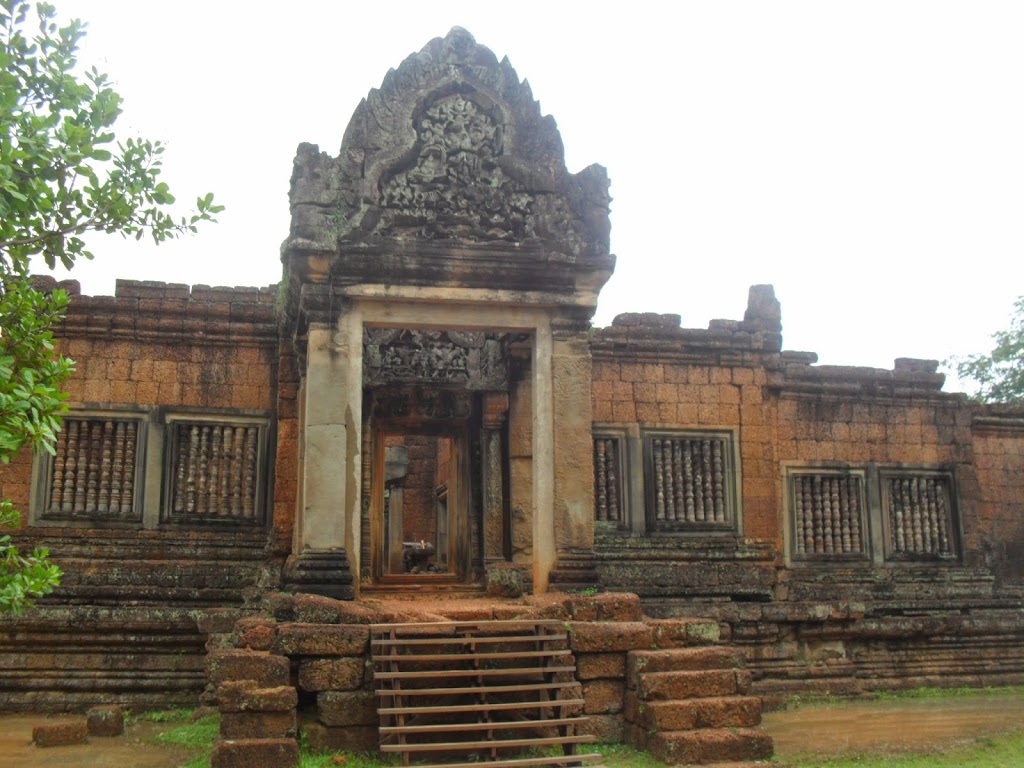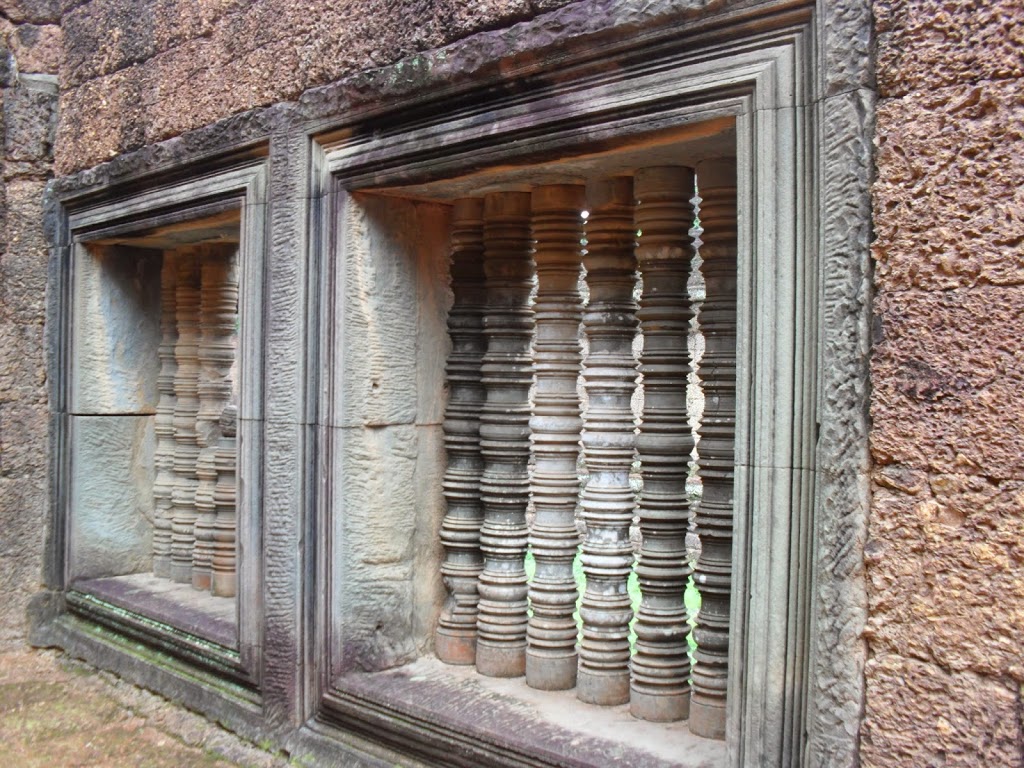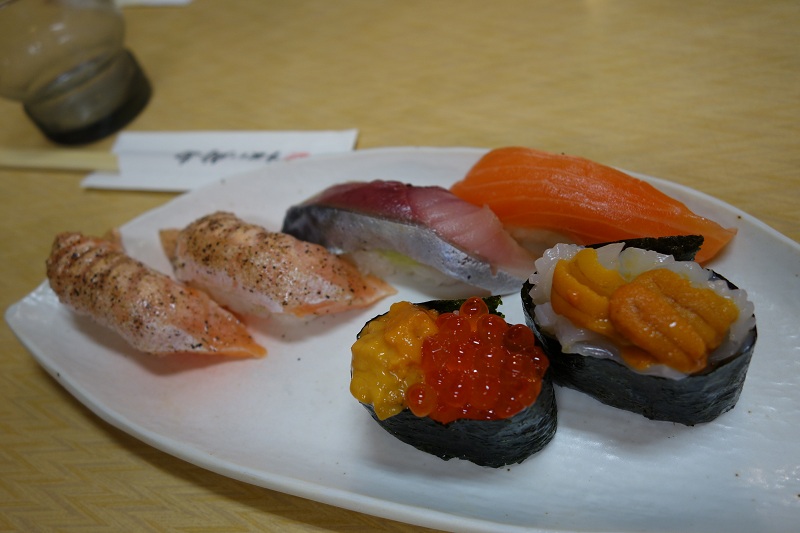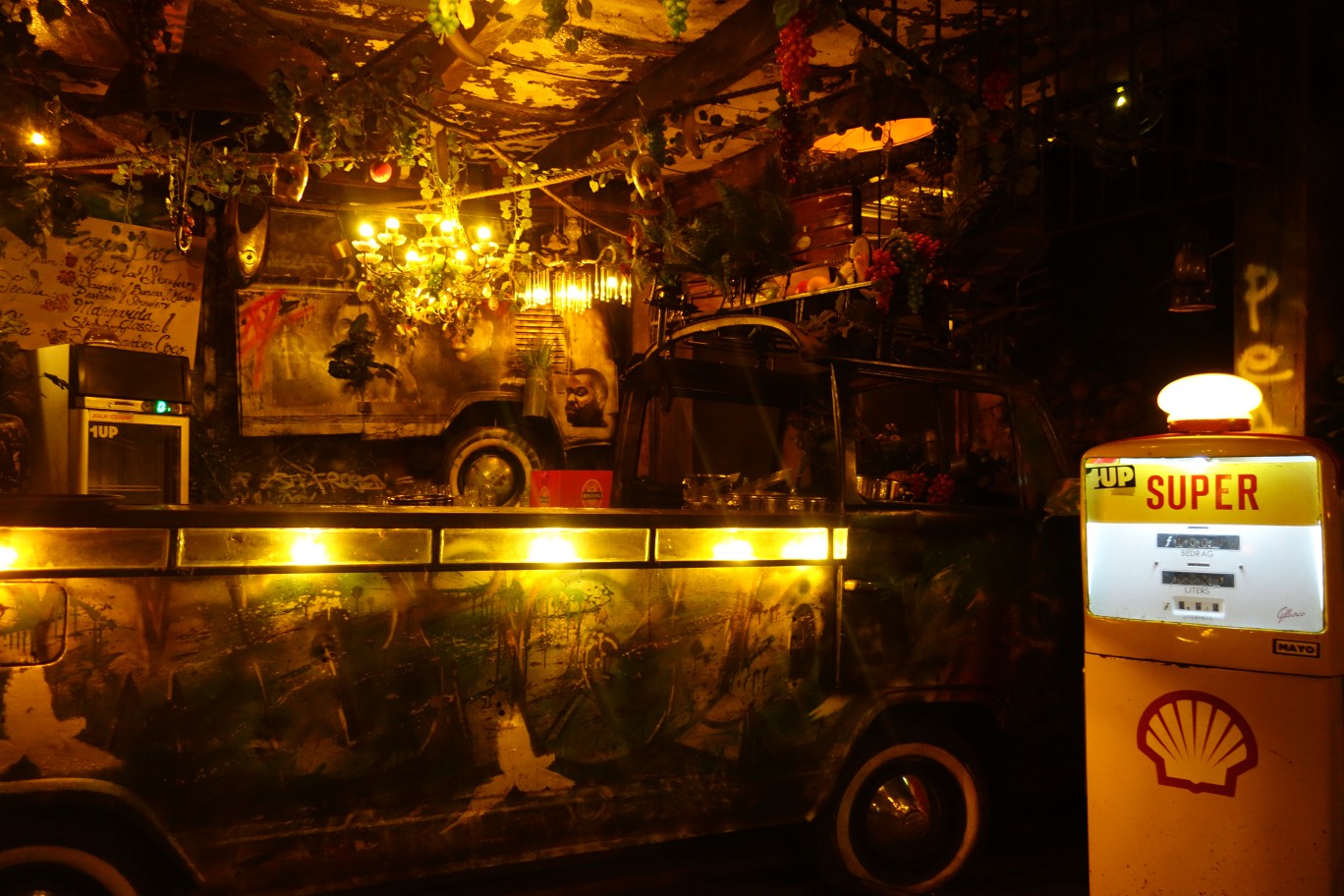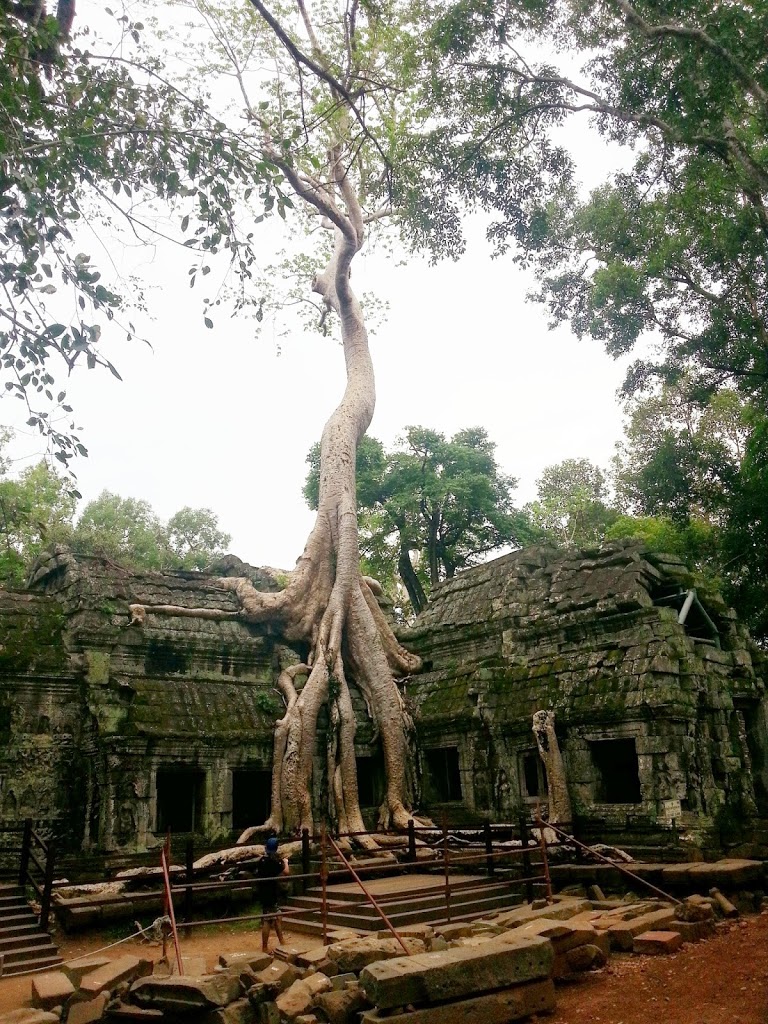After my girlfriends and I got spellbound by the enthralling Banteay Srei, which was the second temple we visited in Siem Reap, I thought that that temple would be a tough act to follow. Well, the next temple we visited was, in fact, smaller than Banteay Srei. Nonetheless, it had its own unique charm and as soon as we stepped inside, we were all enamored. This temple is called Banteay Samre. Samre is the name of the people that once settled in this area.
Not to be confused with Banteay Srei which is made of pinkish red sandstone, Banteay Samrei is dominantly grey in color. I was also a little confused at first, but then I thought of it this way: Banteay Srei is the “feminine” temple (because it’s pink and is referred to as the “citadel of women”) while Banteay Samre is the “masculine” temple (because of its rugged grey tones and the presence of male phallic symbols, which you will read about and see later).
This temple is associated with the legend of the cucumber king (no, you dirty pervert, the cucumber isn’t the male phallic symbol I was referring to!). Here is the story, which I lifted from Travelfish:
“The story goes that a poor Samre farmer by the name of Pou had a particular talent for growing sweet cucumbers. When Pou presented some of the cucumbers to the then-king, he was so taken with them he secured the exclusive rights and commanded Pou to kill anybody who tried to enter his cucumber fields without permission. When cucumber production dropped off during the monsoon, the king became impatient and snuck into the fields himself to try and source a few of the delectable cucumbers — the farmer followed his instructions and speared him to death. When he realised his mistake he buried the king in the middle of the field and hoped nobody would notice.
When a new king couldn’t be decided upon, the dignitaries consulted a divine elephant to select the new monarch. The elephant walked straight to the farmer’s shack, where it saluted the farmer, knelt and then encircled him with its trunk and placed him gently on its back.
Once king, Pou his predecessor dug up and performed proper funeral rites at Pre Rup (guides more often tell this story at Pre Rup than at Banteay Samre). His subjects were a bit put out being ruled by a Samre, and despite all his efforts he couldn’t get the respect he deserved. In the end, Pou moved out to Banteay Samre and set up his court there.”
I’ve never ever tasted cucumbers that were worth risking my life for, so these cucumbers must have been really damn good!
After bumping into so many tourists at Banteay Srei, it was quite relieving to have Banteay Samre (almost) all to ourselves. Banteay Samre was a peaceful little sanctuary where we could take our time to appreciate all the little details and take photos in all the good spots because there was no crowd to worry about.
 |
| Well-preserved details on a lintel of Banteay Samre. They look almost as good as new! |
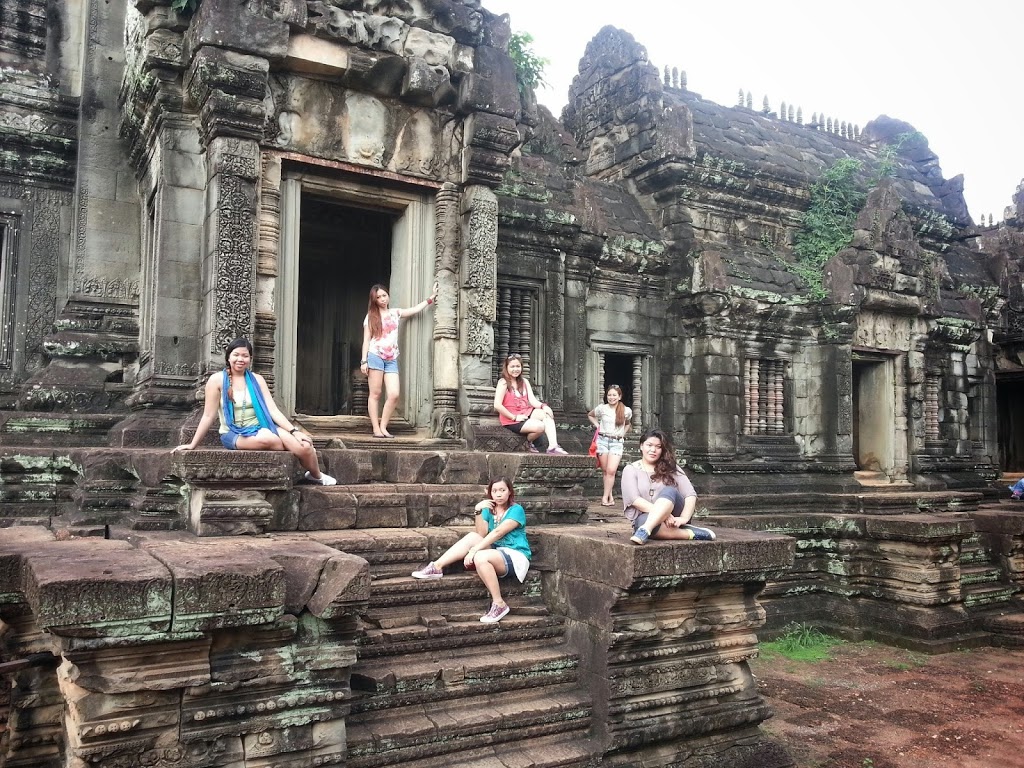 |
| One of my favorite group photos from this trip. It’s so awesome in so many LEVELS… literally and figuratively! |
 |
| When filled with water, the inner moat of Banteay Samre looks like a clear mirror, and it makes the temple even more magical. |
 |
| Our tour guide Sam and my friends Lyka and Alessa explore the temple |
 |
| Stopping to take photos because everything was worth taking a photo of |
 |
| I look so tiny against this structure! |
 |
| Sam takes us around and shows us more interesting things in this temple |
 |
| Someone looks like either a lost child or someone who just got kicked out of her own home by her parents. |
 |
| Lingas inside the temple |
Earlier, I mentioned that I call Banteay Samre the “masculine temple.” One of the reasons is this “linga” — ot is a phallic symbol that represents the Hindu god Shiva, and is also associated with the male sexual organ. There are actually 5 of these lingas in this area. Sausage party!
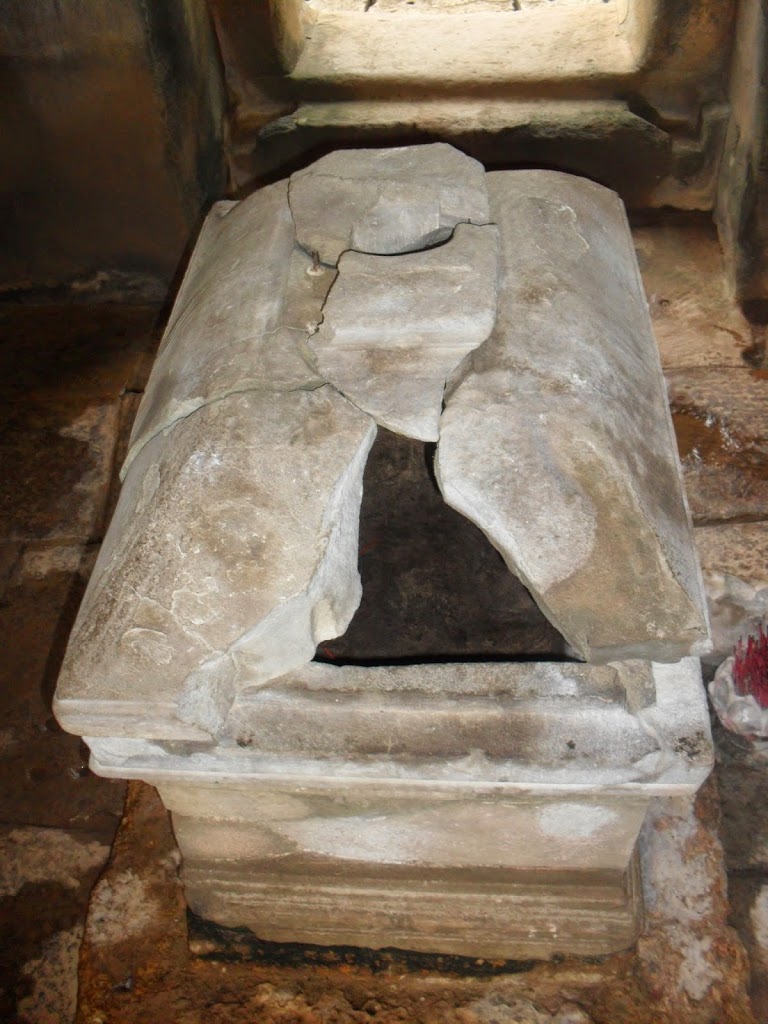 |
| Empty coffin at Banteay Samre |
Our tour guide Sam showed us this empty stone coffin inside the temple, and if you look at it, it looks as if someone had deliberately smashed it and stole the body inside. Very creepy. What I learned was that Khmers buried the dead and then cremated them after a year or so.
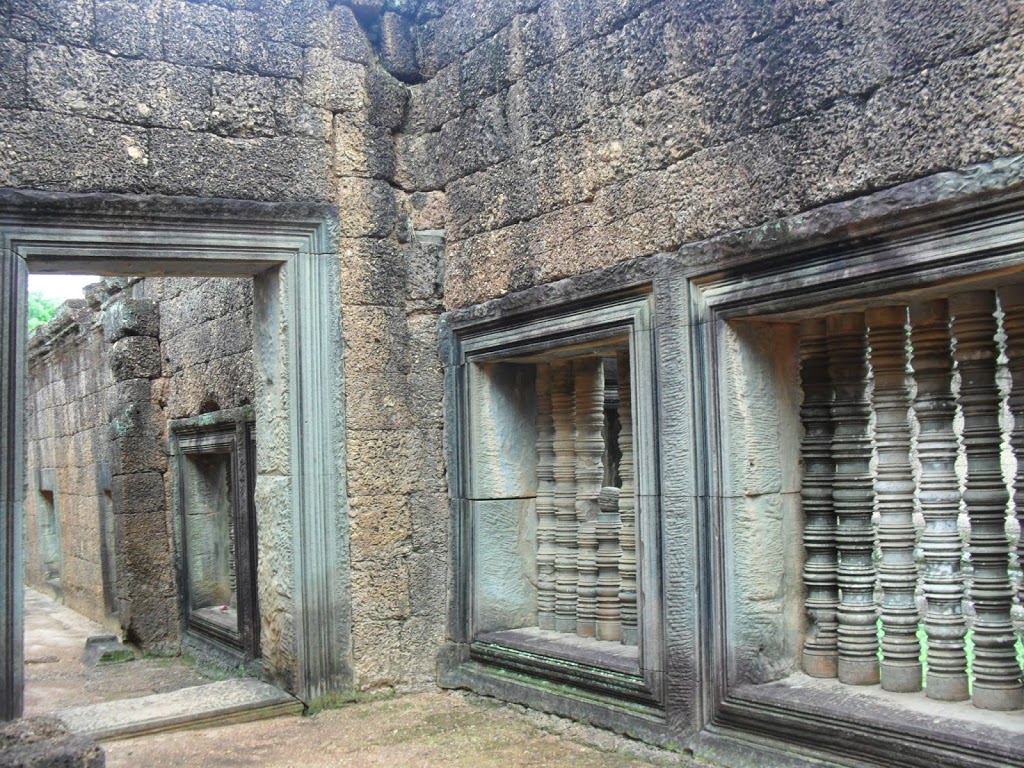 |
| The pillars at Banteay Samre |
 |
| Sculptures of lion guards are seen at a platform in the temple. The tails are missing and are said to have been stolen. |
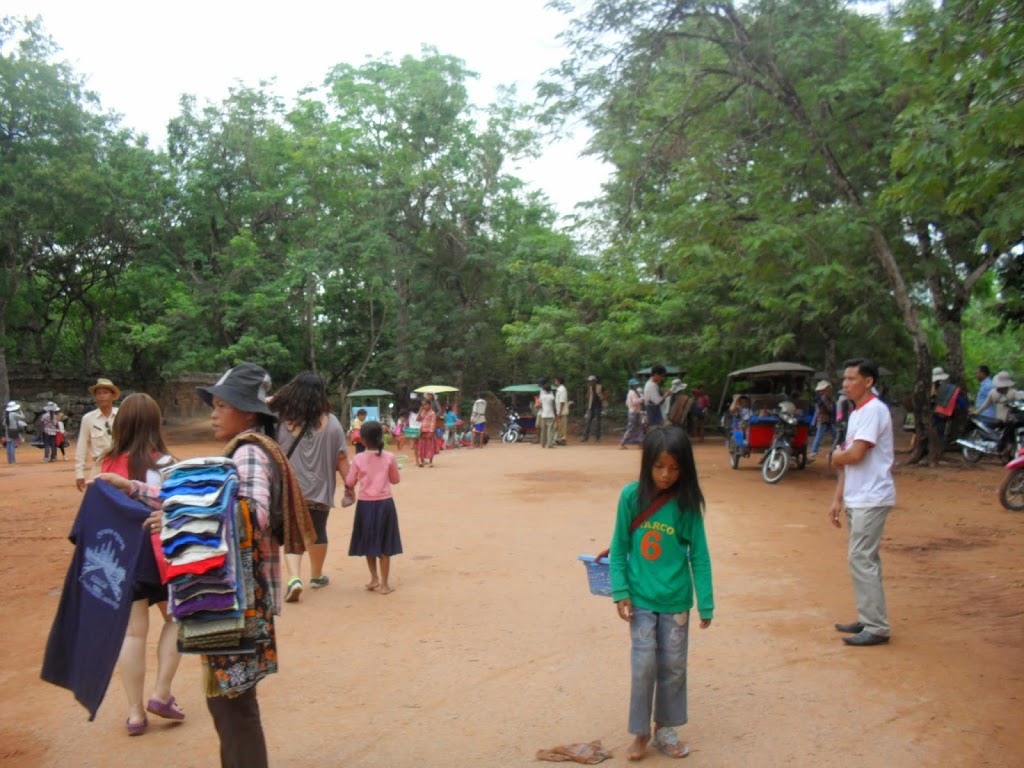 |
| Vendors of all ages selling all kinds of souvenir items await at the exit of the temple. |
If you are visiting Banteay Srei, it is a good idea to combine that visit with a quick stop at Banteay Samre. If you are looking for solitude, quietness, and beauty all rolled into one, Banteay Samre offers all of that. However, as you exit, just like many temples in Siem Reap, prepare to be swarmed by peddlers who simply would not take “no” for an answer! Apart from that, Banteay Samre is a good, well-preserved temple that is worth checking out.

